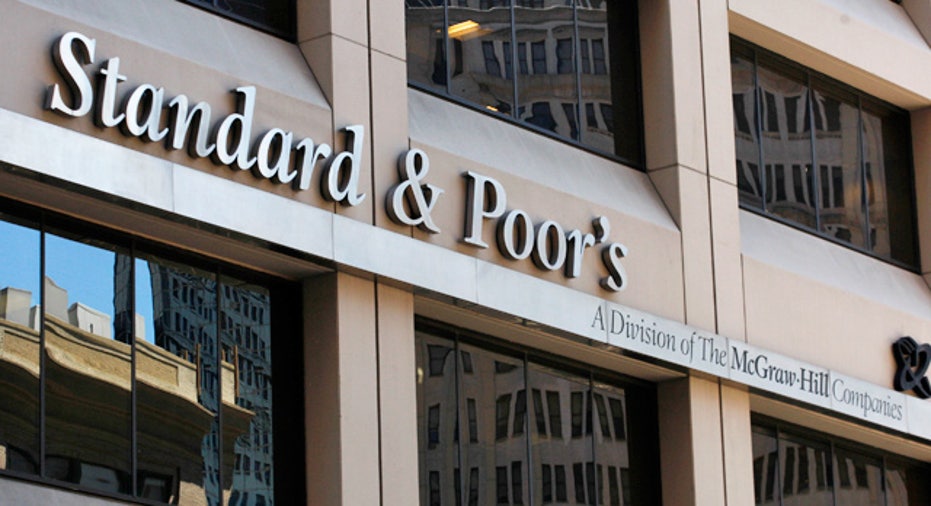Despite Credibility Problem, Raters Cling to Power

At times, the Big Three ratings companies seem to resemble an aging weatherman who remains on air each night even though his forecasts have long ago been proven inaccurate.
Remembering their failure to sound the alarm ahead of the 2008 financial crisis, investors seldom rely on Standard & Poor’s, Moody’s (NYSE:MCO) and Fitch for new insight into the finances of major bond issuers.
Yet despite their collective credibility problem, these giant ratings firms still remain powerful, largely because they hold enormous sway in municipal finance and their ratings dictate where giant pension funds can deploy their billions of dollars.
“Fewer and fewer are relying on them for insight and they’re just paying attention to them because they have a market-moving capability,” said James Gellert, CEO of Rapid Ratings, an independent ratings, research and analytics firm.
Municipal Influence Remains Intact
While investors long ago stopped relying on the Big Three to serve as financial watchdogs, the economies of entire countries, states and municipalities can be beholden to them.
That’s because often times the large ratings companies serve as the only independent arbiters of the financial health of these entities’ budgets, signaling times of stress or improvement.
“They continue to have tremendous influence on state and local government finances,” said Gary Sasse, director of Bryant University’s Institute for Public Leadership. “Just the perception of having a credit rating lowered forces communities to respond.”
Just as the ratings firms were slow to recognize the threat of souring mortgage loans ahead of the ’08 crisis, Sasse said they were behind the curve in highlighting the largest issue hitting budgets today: unfunded pension liabilities.
Fund Managers, Bond Issuers Pay Attention
Even though they may be behind the curve, the ratings of the Big Three often dictate where large pension funds are legally permitted to invest. For example, some state and federal laws prevent funds from buying the debt of companies that lack an investment-grade rating from S&P and Moody’s -- even though the markets may already be treating the debt as junk bonds. These laws seem to legitimize the Big Three’s role.
“Those levels definitely do affect the way many funds do operate,” said Gellert.
When it comes time to prepare a debt offering, most issuers still opt to pay Moody’s and S&P to bless their corporate debt with ratings in an effort to legitimize the bond sales. Investors generally assume the bonds will have ample liquidity so long as the large raters are involved.
“Issuers feel it is a toll they have to pay to come to market” and avoid being charged an illiquidity premium, said Gellert. “They’d rather just pay for the ratings and be done with it.”
There’s also a political element that helps explain the ratings companies’ continued influence. After all, no mayor, governor, president or CEO wants to be known as the one who lost his or her entity’s perfect credit rating.
“It’s just egg on the face for management when this happens,” said Anthony Sanders, a finance professor at George Mason University.
Last summer McGraw-Hill’s (NYSE:MHP) S&P downgraded the U.S. for the first time ever, but the move had little to no impact in the markets as Treasury yields continued to hit multiyear lows.
Investors Shrug Shoulders
Scarred by previous failures, investors seem to be paying little attention to ratings actions from the Big Three, even during the current eurozone debt crisis.
“We do not really look at what they’re saying,” Andreas Uterman, global chief investment officer at Allianz Global Investors, said in a panel discussion earlier this week. “There has to be a suspicion that they are behind the curve here as well. In some ways the downgrades are telling you what everyone already knows.”
There’s also a suspicion among some that the ratings companies are just trying to save face after prior stumbles.
“I think there’s a political element where they are trying to reestablish their credibility -- but the market is viewing it as very late,” said Scott Migliori, chief U.S. investment officer at Allianz Global Investors.
The credibility problem only adds to a longer-term decline in the ability of ratings companies to influence investors.
In the past, investors relied on the ratings firms to fill an information gap, Sanders said.
“Now, with everything online and all the information sources available, their niche has shrunk. It’s not as important as it used to be,” he said.
Alternatives Eyed
After receiving a two-notch downgrade from Moody’s last week, Citigroup (NYSE:C) issued a statement that cheered the shift away from a reliance on the Big Three raters.
“Citi believes that investors and clients have become much more sophisticated in their credit analysis over the past three years, and that few rely on ratings alone -- particularly from a single agency -- to make their credit decisions,” the firm said. “We applaud this development.”
Citi also highlighted the rise of “analytical alternatives” to the big ratings firms that would “further enhance the ability of investors and clients to arrive at their own conclusions without being captive to the judgments of ratings agencies.”
That’s where Gellert’s firm, Rapid Ratings, enters the fray. With just 25 employees, Rapid relies on a quantitative econometric process, unlike the qualitative system deployed by the traditional raters.
Rapid has seen enormous growth, doubling its client base and revenue over the past year. Gellert said his firm rates about 8,400 public companies, up from 6,000 at the end of 2011. He also expects Rapid to be rating around 17,000 to 18,000 private companies by the end of the year, compared with just 5,000 at the end of 2010.
“More and more buy- and sell-side players are recognizing there are more innovative ways of measuring risk than traditional ratings,” said Gellert.